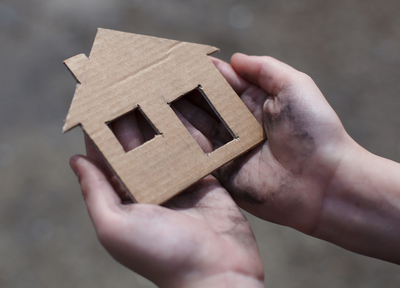September is National Recovery Month, “a national observance held every September to promote and support new evidence-based treatment and recovery practices, the nation’s strong and proud recovery community, and the dedication of service providers and communities who make recovery in all its forms possible.” (SAMHSA)

While it is probably not surprising that substance use disorders can lead to homelessness, the opposite can also be true: homelessness can lead to substance use issues.
According to the National Coalition for the Homeless, people who are homeless often turn to drugs and alcohol to cope with their stressful circumstances.
“Living on the street can be traumatic, and it often causes people to turn to substances as a means of escape,” explains Ebony Burns, Program Director at VOA-Greater New York’s permanent housing facility for people who struggle with mental illness and addiction in the Bronx.
These individuals might also feel that using drugs and alcohol is necessary to being accepted among the homeless community.
It can be even worse for individuals who are struggling with mental illness. “Their symptoms are often worsened when they find themselves without a home,” says Ebony, “and this causes them to turn to drugs or alcohol as a means of relief.”
Understanding the factors behind a person’s substance use disorder, especially someone experiencing, or at risk of, homelessness, is crucial for determining what kind of support they may need on the road to recovery. And this is why an integrated approach to treatment is so important, explains VOA-Greater New York’s Acting Assistant Vice President of Behavioral Health Services, Paula Turso. “You can’t, for instance, help someone who’s using substances because they’re depressed if you don’t also treat their depression,” she says.
One of the reasons that substance use disorders are so difficult to treat is that the use of substances (like drugs and alcohol) changes the brain, making the compulsion to use perpetual.
According to New York State Office of Addiction Services and Supports, most people feel a sense of ambivalence when it comes to changing their behavior.
“There is also the concept of euphoric recall,” adds Anita Nance, Case Manager Supervisor who has worked with hundreds of individuals with substance use issues at VOA-Greater New York’s assessment shelter for men. “This means that a user is inclined to only remember the good things that happened to them when they were high, and not the bad.”
Therefore, if a person is compelled to use alcohol or drugs in order to escape their life on the streets, the temporary feeling of relief that person might feel will be a state they try to recapture again and again.
It’s a very difficult cycle to break.
Because of this, VOA-Greater New York staff sometimes employ a “harm reduction” approach to the care they offer individuals who suffer from substance use disorders. This means focusing on making their quality of life better versus trying to get them to stop using altogether, which can be a very difficult outcome to achieve.
The tactic calls for a non-judgmental attitude that acknowledges the realities of poverty, class, racism, social isolation, past trauma, sex-based discrimination and other social inequities that affect an individual’s capacity to become vulnerable to substance-related harm.
While it may be difficult, in some cases, to get a client to stop using substances completely, it is often possible to minimize the amount of harm a client may do to themselves.
This could mean educating the client about dangerous additives or helping make sure they pay for rent and groceries first each month before they spend money on anything else.
Sometimes, if a client is willing, staff can refer individuals to rehab, psychotherapy, or connect them with family who might also be able to help get them on the path to a happier, healthier, autonomous and substance-free life.
And as a nonprofit dedicated to ending homelessness in the New York area by 2050, keeping clients housed is always VOA-Greater New York’s paramount objective.
No matter which approach turns out to be the best way to keep them on the path toward a positive outcome, VOA-Greater New York staff are always there to address the health needs of our clients in a thoughtful and caring way.
Or, as Ebony puts it, “What it all comes down to is compassion. A lot of our clients have so much baggage. Sometimes you just have to be patient, place yourself in someone else’s shoes and show them, by your actions, that you care.”
Learn more about our services for individuals living with behavioral health and substance use disorders.
